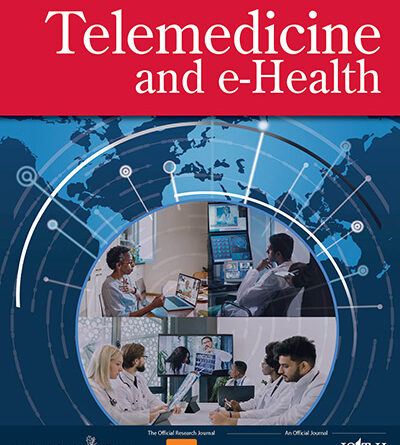Telehealth as a Public Health Construct
As we emerge from the Public Health Emergency (PHE), brought on by COVID, human society worldwide has changed in many ways; it has adapted and is perhaps become more resilient. I recently returned from Cologne, Germany, where I was at the European Astronaut Training Center for a series of medical meetings related to the International Space Station. Masking is no longer mandatory there, but wearing them is highly recommended, especially in the transportation sector. I also recently attended The Ohio State University football game where there were >105,000 people in proximity, most not wearing masks. Many of us no longer don a facial covering. This is most likely due to the fact that the virus is waning and the vaccination rates have increased. Masking definitely works!1 Face coverings have been used for centuries. In fact, early masks in the 17th century had beaks like a bird and prevented most physicians from contacting the plague, although it was not necessarily 100% effective.2,3 This construct worked for public health.
Before the beginning of the PHE, the concept of fully integrating telemedicine and telehealth was fraught with challenges and belief systems that in some ways were, quite frankly, ridiculous. Often predicated purely on personal opinion, misinformed management, and even fear of change, acceptance was slow. The rapid adoption and success in the immediate aftermath of the pandemic announcement by the World Health Organization was unparalleled in recent history. The literature has shown many success stories with ample data, which reinforce what we have all come to know and appreciate. Yet the skeptics remain.
For public health to maintain its balance with medical care capabilities nationwide and worldwide, there must be a strong effective evidence base and construct that maximizes capabilities, competencies, and needs. Telehealth and telemedicine have been applied successfully and admirably. However, as a construct for public health, a few things should be considered. First, when initiating or implementing a telehealth or telemedicine program, a comprehensive needs assessment should be taken. In other words, do not just jump in with a solution that may be untested or not adequate for your practice. Second, do a thorough review the literature. Many individuals I have interacted with only look back 10 years or so. I can attest that issues we face today were faced and written about in the 1970s; the only real difference is the change in technology.
A robust and effective public health system that incorporates advanced technology, including artificial intelligence, sensors and drones for environmental monitoring, easy and reliable access to health information and health care services provides for a more stable construct that can ameliorate some of the pressures and burdens on health care systems worldwide. By incorporating telehealth and telemedicine into the public health sector, the health care system benefits through equity and equality. The integration of public health sciences, informatics, and e-health will set the stage for the next leap in innovation in both public health and our overtaxed health care system.4 The social determinants of health can be positively impacted by incorporating telehealth and telemedicine.5 Benda et al further posit that access to broadband internet is a social determinant of health.6
What Is in This Issue
This issue marks the end of the 2022 series and the 28th year of excellent materials. Although it is only mid-November as I write this, the expectation of large number of submissions lingers and the impact factor, as reported early this year has increased substantially. This is a testament to what you submit and how it adds value to our expanding field.
In this issue are several outstanding review articles from Colorado, New York, Spain, and the United Kingdom. In addition to these, there are a variety of submissions from Australia, Colombia, Mexico, Poland, and the Unites States.
I draw your attention to the article by Sodhi et al. Nandini Sodhi was enrolled at the University of Arizona and worked closely with Dr. Ronald Weinstein several years before his passing.7 Dr. Weinstein reached out to me with this idea of doing an analysis of terminology with this young student interested in medicine. This is one of the last articles to be published with Dr Weinstein. It is a testament to his work and his influence on the younger generations that we can all learn from.
I am already working on another stellar volume for our 29th year!
Have a wonderful holiday season and Happy New Year.
References
- 1. Drawing parallels among past public health crises and COVID-19. Disaster Med Public Health Prep 2021:1–7; doi:
10.1017/dmp.2021.202 Crossref, Medline, Google Scholar - 2. . Protective face masks through centuries, from XVII century plague doctors to current health care professionals managing the COVID-19 pandemic. Acta Biomed 2020;91(4):e2020124; doi:
10.23750/abm.v91i4.10231 Crossref, Medline, Google Scholar - 3. . Plague: The dreadful visitation occupying the human mind for centuries. Trans R Soc Trop Med Hyg 2004;98(5):270–277; doi:
10.1016/S0035-9203(03)00059-2 Crossref, Medline, Google Scholar - 4. . Telemedicine, telehealth, and the public health good. Telemed J E Health 2019;25(9):773–774; doi:
10.1089/tmj.2019.29028.crd Link, Google Scholar - 5. A proposed patient-inclusive methodology for developing and validating telehealth surveys that include social determinants of health. AMIA Annu Symp Proc 2022;2021:565–570. Medline, Google Scholar
- 6. Broadband internet access is a social determinant of health! Am J Public Health 2020;110(8):1123–1125; doi:
10.2105/AJPH.2020.305784 Crossref, Medline, Google Scholar - 7. Analysis of telehealth versus telemedicine terminology in the telemedicine and e-Health journal between 2010 and 2020. Telemed J E Health 2022;28(12); doi:
10.1089/tmj.2022.0073 Link, Google Scholar


